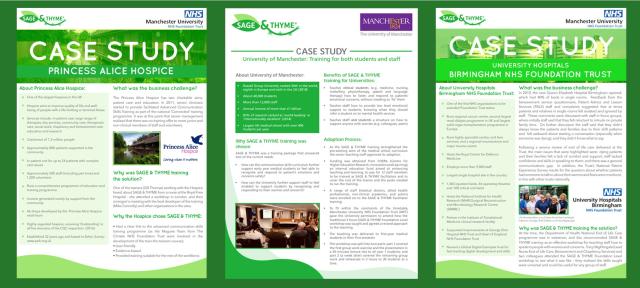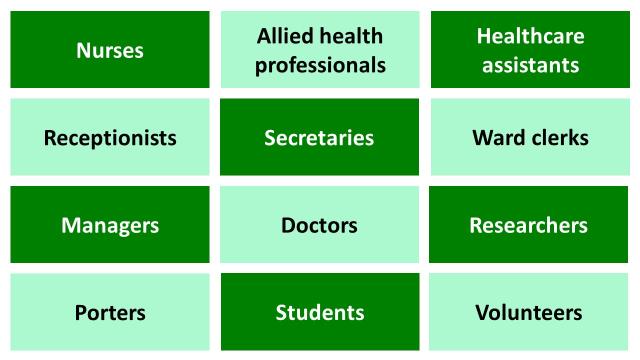Want to improve communication skills in your organisation?
"To use an analogy, teaching SAGE & THYME is like teaching first aid for people who are upset."
SAGE & THYME training will teach your staff, students and volunteers how to speak to and support people who are worried.
This will help:
- Your patients to feel listened to and supported
- Your staff, students and volunteers to support each other with their worries
- Your staff, students and volunteers to feel more satisfied and in control of conversations.
Watch this short video to understand how using SAGE & THYME in a conversation works
We can run SAGE & THYME workshops for your staff.
However, our main focus is on training up your staff and giving you access to all the SAGE & THYME training materials so that you can run the SAGE & THYME workshops for yourself.
We have found that most organisations prefer to teach SAGE & THYME workshops face-to-face, but some find SAGE & THYME online workshops helpful.
Step 1 - Find out more about how the SAGE & THYME training works
Learn more about SAGE & THYME training.
Our 'basic guide' provides a summary of all the information you need in one place.
Step 2 - Learn how other organisations run SAGE & THYME training
Read some case studies to understand how other organisations have adopted SAGE & THYME training.
Then contact us to get any questions answered.


Find out how other organisations started running SAGE & THYME training
Step 3 - Make a case for the funding
Use our 'business case guide' to put a business case together.
You can find example costs in our 'basic guide'.


Find information to put in a business case.
Step 4 - Consider who will become your facilitators
There is a person specification that acts as a guide for finding the right people.
This is explained in the 'Becoming a facilitator' guide.
Commonly, facilitators are:
- Specialist nurses
- Doctors
- Social workers
- Staff working in psychological support (including Clinical Psychologists)
- Chaplains
- Human resources and organisational development staff and managers
- Preceptorship staff
- Allied health professionals (AHPs)
- Community staff
- Training department staff
- Occasionally non-clinical staff
Becoming a Facilitator
Step 5 - Organise for your staff to be trained as SAGE & THYME facilitators
You can either send your staff to Manchester to be trained, or if you have sufficient people (normally twelve) then we can give a quote for the cost of our trainers delivering this locally in your own venue.
Each person wishing to become a SAGE & THYME Facilitator must attend a SAGE & THYME Foundation Level workshop followed by a SATFAC course over the following two days.
Step 6 - Organise a licence from us to run SAGE & THYME training
You need a licence from us to use the copyright materials and SAGE & THYME logo when you run the SAGE & THYME workshop.
Step 7 - Start teaching SAGE & THYME workshops
Once your staff are trained up and the licence is signed, you can start running SAGE & THYME workshops.
SAGE & THYME Facilitators and organisers can log into the 'Trainer Area' of this web site to access the resources they need to:
- Prepare for the workshop
- Run the workshop














